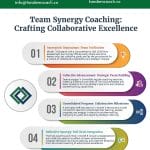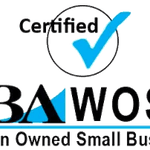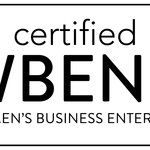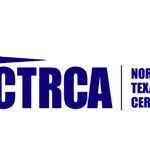It’s lonely at the top. Halfway through his first year as CEO, John realized this firsthand. Despite a strong track record, he found himself overwhelmed – major decisions kept him up at night, his team’s morale was slipping, and he had no sounding board. He isn’t alone. In fact, nearly two-thirds of CEOs don’t receive outside leadership coaching or advice, even though almost all want it . At the same time, new leaders face steep odds: between 27% and 46% of executive transitions are seen as failures after two years . The gap between what leaders need and the support they get is glaring. No wonder even Bill Gates famously said, “Everyone needs a coach,” underlining that no matter how senior you are, objective guidance is invaluable .
In today’s high-pressure environment, having the right kind of coaching can mean the difference between thriving in your role or becoming another statistic. But not all coaching is the same. Much like choosing the right tool for a job, leaders must choose the right type of coach for their particular challenge or goal. An executive taking on broader strategic duties has different needs than a new manager learning to lead people, or a high-potential employee honing a specific skill.
This article will demystify the main types of coaching available to executives and senior leaders, from one-on-one executive coaching to team coaching and more. Drawing on my experience as a seasoned executive coach (and real examples from the C-suite and VP level), we’ll explore what each coaching type entails, the core principles behind it, and how to know if it’s the right fit for you. By the end, you should have a clear sense of which coaching approach can best support your leadership journey – and practical tips for making the most of it.
TL;DR;
•One size doesn’t fit all: Different coaching types serve different goals. Choosing the right coaching fit depends on what you need – whether it’s big-picture leadership development, help with a specific skill or performance gap, guiding a whole team, or support through a transition.
•Executive & Leadership Coaching – strategic growth: Provides one-on-one, bespoke development for broad leadership skills and self-awareness at senior levels. A coach acts as a confidential sounding board to sharpen strategy, decision-making, and leadership impact . This type is often used by C-suite leaders or high-potentials preparing for bigger roles.
•Performance & Communication Coaching – targeted improvement: Zeroes in on concrete areas for improvement – for example, public speaking, executive presence, time management or hitting specific business KPIs. Through practice, feedback, and accountability, it drives measurable gains in those areas (coaching has been shown to boost individual productivity ~44% ). It’s ideal when you have a particular skill or result to elevate.
•Team Coaching – improving team dynamics: Focuses on the team as a whole, not just individuals. A team coach works with leadership teams or project teams to build trust, enhance communication, resolve friction, and align on goals. The result is a more cohesive, high-performing team (better collaboration and collective results) – critical for organizations where siloed efforts need uniting.
•Onboarding/Transition Coaching – success in new roles: Supports leaders through major role changes – like promotions, new assignments, or joining a new company. A transition coach helps shorten the learning curve, build confidence, and avoid common pitfalls in the first 90-100 days. This type of coaching can dramatically increase the odds of a successful leadership transition by helping you integrate faster and more effectively.
Executive Coaching: Strategic Partner at the Top
When you’re at the executive level – CEO, COO, VP or leading a significant business unit – who do you turn to for honest feedback and growth? Your team expects you to have answers, and peers or board members might not give objective critique. This is where Executive Coaching comes in. Executive coaching is a personalized, confidential partnership between a senior leader and an experienced coach, aimed at expanding leadership capacity and driving organizational success . Unlike a consultant who might solve a specific business problem, an executive coach works with you to enhance your ability to solve problems, lead, and make decisions. As Tandem Coaching defines it, “executive leadership coaching is a development process aimed at improving the leadership capabilities of executives in an organization” . In other words, it’s about making you the most effective leader you can be, so that you can in turn grow your business.
Core focus: Executive coaching typically centers on big-picture leadership and personal growth. A good executive coach serves as a sounding board, truth-teller, and champion. They help uncover your blind spots and challenge your thinking – all in a safe, agenda-free environment. For example, in our coaching sessions I might use a 360-degree feedback assessment to gather candid input about a leader’s strengths and weaknesses from colleagues . This data becomes a starting point to increase the executive’s self-awareness. From there, we zero in on key areas like decision-making, strategic vision, delegation, or even work-life balance – whatever will most elevate their leadership effectiveness. It’s not therapy, and it’s not generic training. It’s highly personalized and action-oriented. One popular framework many coaches use is the GROW model (Goal, Reality, Options, Will): together we set a Goal, examine the current Reality, brainstorm Options, and commit to what you Will do . This structured conversation ensures each coaching session leads to concrete action steps aligned with your strategic objectives.
Real-world example: I once worked with a CTO of a fast-growing tech company who was brilliant technically, but struggling to lead his expanding team. In our executive coaching engagement, we focused on developing his people leadership skills and strategic thinking. Through candid dialogue, he realized he was micromanaging and not trusting his new directors – a classic blind spot. We implemented a plan: he practiced delegating major projects (starting with one per quarter), and we role-played his interactions to improve how he coached his team instead of diving into the code. Over six months, the change was remarkable: his directors grew more autonomous and engaged, and he freed up time to focus on long-term tech strategy. He later told me that having a confidential coach to “think out loud” with – and to hold up a mirror to his habits – was instrumental in making that leap from manager to true executive.
Research & insight: Executive coaching isn’t just a nice-to-have for performance – there’s evidence it tangibly benefits organizations. About one-third of Fortune 500 companies now utilize executive coaches as part of their leadership development strategy . Why? Because it works: studies have found an average 788% ROI for businesses investing in coaching (nearly 8x return) when improvements in productivity and retention are factored in . Coaching provides that outside perspective and structured development that even the best internal training can’t always offer. As one Harvard Business Review study noted, almost all CEOs welcome coaching because it can be lonely to navigate top-level challenges without unbiased support .
Actionable guidance: If you’re a senior leader considering an executive coach, clarify your goals first. Do you want to become a better communicator to the board? Improve your strategic planning? Manage stress and time more effectively? Defining a focus helps in finding the right coach. Look for a credentialed coach who has experience working with leaders at your level – you want someone who understands the pressures of the C-suite. Chemistry is important too; many coaches (including our team at Tandem Coaching) will offer an introductory call or session. Use that to assess if the coach asks insightful questions and “gets” you. Trust and confidentiality are the bedrock of a good coaching relationship, so you need to feel comfortable opening up about sensitive issues. Finally, be ready to put in the work – an executive coach will guide and support you, but you will be setting the agenda and following through on commitments. Expect to come out of a good executive coaching engagement with sharper self-awareness, improved leadership skills, and a clear game plan for your personal and organizational goals. As the founder of Tandem often says, our mission is to leave you better than we found you, every time – the right coach should do exactly that.
Tandem Coaching offers Executive Leadership Coaching programs tailored to high-level leaders. We’ve helped CEOs and VPs navigate complexities and elevate their impact through customized one-on-one coaching.
Leadership Coaching: Developing High-Potential Leaders
Not every leader being coached sits in the C-suite. Many are in the mid-level to senior management ranks – directors, VPs, or rising stars – who are looking to level up their leadership game. This is where Leadership Coaching comes into play. In practice, the line between “executive” and “leadership” coaching can blur, but generally leadership coaching is a bit broader: it’s about cultivating core leadership skills and mindset at any level of leadership, often to prepare someone for greater responsibilities. Think of it as nurturing the leader within, whether you’re a new manager or a seasoned exec looking to grow. As one definition puts it, “leadership coaching is a personalized development process in which a coach works with you, a leader, to enhance your skills, mindset, and behavior… unlocking your potential to achieve personal and organizational goals.” That captures it well – it’s about you becoming a better leader so that your team and organization benefit.
Core elements: Leadership coaching often emphasizes self-awareness, interpersonal skills, and leadership presence. A key principle here is that better people make better leaders. So a leadership coach will push you to reflect on how you lead – your communication style, emotional intelligence, how you inspire and motivate others. One of my favorite quotes on leadership (which I often share with clients) comes from John Quincy Adams: “If your actions inspire others to dream more, learn more, do more, and become more, you are a leader.” . In that spirit, a leadership coach helps align your actions with the inspirational leader you want to be. This might involve practical tools like 360-feedback (to understand how your colleagues perceive you) or personality assessments (e.g. DISC, Myers-Briggs) to identify your natural leadership style. It often involves reflection on real workplace situations: for example, dissecting a meeting that went poorly and figuring out how you could handle it better next time. Unlike an instructor who teaches a class on leadership, a coach guides you to find your own answers. They’ll ask probing questions like, “What do you think is holding your team back?” or “How did your reaction in that situation align with your values?” This process builds the leader’s capacity to continuously learn and adapt. In fact, effective leadership coaching creates a habit of self-reflection – so you become your own coach in the long run.
Scenario – developing a high-potential: To illustrate, let’s say you’re a senior manager being groomed for a director role. You have strong technical skills and you deliver results, but now you’ll need to lead a larger, more cross-functional team. A leadership coach might start by helping you identify a few critical competencies for that next role – perhaps strategic thinking and delegation. Over a 6-month coaching program, you work on those. You might do a values exercise to clarify your leadership philosophy, then set specific goals like “delegate 30% more of my weekly tasks” or “lead monthly strategy brainstorms with my team to practice thinking beyond the day-to-day.” The coach meets with you bi-weekly to check progress, discuss challenges, and role-play tough scenarios (maybe how to give constructive feedback to a veteran team member, or how to influence peers in other departments). Through the process, you start to see changes: you’re less in the weeds and more focused on guiding your team, your team members are stepping up with their own solutions, and your peers remark that you’re contributing more in cross-department strategy meetings. By the time that promotion interview comes, you have concrete examples to demonstrate your leadership growth – and, more importantly, you feel ready for the bigger job. This is a common arc for leadership coaching, especially with high-potential employees preparing for larger roles.
Lived insight: In my coaching practice, I’ve seen how leadership coaching can transform not just a leader’s performance, but their whole perspective. One VP I coached – we’ll call her Maria – realized during coaching that she was so caught up in daily operations that she never developed her team leads. She was the bottleneck. Through our sessions, Maria consciously shifted from a “heroic leader” (doing everything herself) to a “multiplier” leader (empowering others). We set specific steps: she started a weekly 1:1 coaching-style meeting with each of her direct reports, where instead of giving them answers, she mainly asked questions to guide their thinking (at first she joked that it felt awkward to hold back advice). Over a quarter, decisions that used to all funnel to Maria were now being handled by her team, and she had more time to focus on strategy and stakeholder management – exactly what her boss wanted from her as a VP. Her stress went down, and her team’s engagement went up. This kind of personal development radiates outward: Maria’s team members reported they felt more trusted and grew in their own roles. This underscores a core leadership coaching principle: “The coach approach” can be contagious. By modeling good coaching behavior with a leader, they often start coaching their own teams, creating a more empowered and growth-focused culture.
Actionable guidance: How do you know if leadership coaching is right for you or one of your team members? A few telltale signs: You might feel you’ve plateaued and need to push to the next level, or perhaps you’re facing new leadership challenges (e.g. leading a larger team, managing through change) and could use objective guidance. Many organizations use leadership coaching specifically to invest in high-potentials – not only does it build their skills, it also boosts retention. (Remember that people tend to stay where they feel developed; one study found retention is 34% higher among employees who have professional development opportunities, and 94% would stay longer if their company invested in their careers .) So if you’re a senior leader, consider offering coaching to that rising star on your team before they get poached by a competitor.
When engaging a leadership coach, be clear on the development areas or outcomes you care about. Do you want to become a more inspiring communicator? Improve your delegation and team-building? Perhaps strengthen your executive presence? Communicate these goals; a good coach will tailor the process accordingly. Also, be open to feedback – often coaches will gather input from your colleagues or have you reflect deeply on your behavior. It can be humbling to confront your growth areas (I’ve had clients discover through coaching that their team finds them unapproachable, for example), but that insight is gold if you use it to improve. Lastly, remember that leadership coaching is a partnership – the coach isn’t there to tell you what to do, but to help you figure out what works best for your style and context. They might share frameworks or stories from other leaders, but ultimately it’s about you finding solutions that feel authentic to you .
Performance Coaching: Focus on Results and Skills
Sometimes, the need is very specific. Perhaps you’re a talented leader whose only Achilles’ heel is public speaking – those quarterly town halls make your palms sweat. Or maybe you’re a senior sales director under pressure to improve your team’s numbers next quarter, or a busy executive struggling with productivity and time management. In cases like these, Performance Coaching can be the answer. Performance coaching is all about targeted improvement – it hones in on particular behaviors, skills, or outcomes you want to achieve. Think of it as precision coaching to close a gap or hit a goal, often within a defined timeframe. This category can include Communication Coaching or Executive Presence Coaching (for those focusing on speaking, presenting, personal impact) and other niche areas like productivity coaching or performance management coaching. The unifying theme is a laser-focus on performance metrics and behavioral change.
Core focus: Performance coaching typically starts with a clear goal: for example, “Increase my team’s Q4 sales by 15%,” or “Become a more compelling public speaker for the upcoming conference,” or “Improve work-life balance to avoid burnout.” The coaching engagement is then structured around that goal. Unlike broader executive coaching, which might explore a wide range of leadership topics, performance coaching is often shorter-term and highly structured. The coach will help break the goal into sub-goals and actionable steps, often introducing specific techniques or exercises. For instance, if the goal is improving public speaking, the coach might work on vocal techniques, body language, and have you practice key presentations on video for critique . If it’s improving team sales performance, the coach might help analyze your team’s current sales process, identify bottlenecks, and brainstorm new strategies – then hold you accountable for implementing changes and tracking the numbers. There’s a strong element of accountability: a performance coach is there to make sure you’re following through on commitments and to push you if progress stalls. Meetings might be weekly or bi-weekly to maintain momentum. This type of coaching often uses metrics and real-world results as the ultimate measure of success (did the sales go up? did the presentation earn positive feedback? are you able to leave the office by 6pm now?).
A common sub-type of performance coaching for executives is Communication or Executive Presence Coaching. I’ve coached several leaders in this area, and the process is illustrative. One client, a CFO named Raj, was technically excellent but struggled whenever he had to present to the board – he’d get flustered by tough questions and his anxiety showed. Our coaching goal was to make Raj an engaging, confident communicator in high-stakes meetings. We started with a baseline: I had Raj simulate a portion of his board presentation while I observed and even recorded it (with his permission). We reviewed it together – a bit painful for him, but he immediately spotted habits like avoiding eye contact and rushing through slides. We then worked on specific skills: crafting a clear narrative for his presentations (so he wouldn’t get lost in details), techniques to slow down and pause for emphasis, and strategies to handle Q&A (one was a simple trick: repeat the question asked, which buys time to think and ensures you understood it). We practiced these in our sessions; sometimes I’d throw difficult questions at him to simulate the pressure. Over three months, Raj’s improvement was noticeable. In the next board meeting, he was far more composed – he even told a short story to illustrate a financial point, which earned a smile from the CEO. Afterwards, one of the board members told him, “That was night-and-day compared to last quarter.” Objective achieved. This kind of communication coaching is quite structured and practice-intensive – much like working with a speech coach or even a personal trainer, there’s a lot of “reps” to build the muscle.
Insight and research: Performance coaching works largely because of behavioral science – it turns goals into manageable actions and builds new habits through repetition and feedback. It’s essentially applied adult learning theory. And it can yield strong results. For example, research aggregated by the International Coach Federation found that coaching (especially with a performance improvement angle) can boost productivity by 44% on average . Imagine that – you could almost half-again your output by working on specific productivity behaviors. Similarly, organizations see value: one ICF-commissioned global study reported a median ROI of 788% for coaching, largely because of gains in employee performance and retention . In plain terms, a good performance coaching engagement should pay for itself many times over in improved results. Another telling stat: a study by MetrixGlobal found that coaching improved team performance by 50% on average – which is why many companies integrate coaching when pushing for higher team targets.
Actionable guidance: If you have a specific challenge or goal where you feel “stuck” or underperforming, consider performance coaching. Start by articulating what success looks like. For instance, “I want to reduce my speaking anxiety and get excellent feedback on my next public presentation,” or “I need to improve my department’s project delivery time by 20% this year.” Having a quantifiable or observable target is important for this type of coaching. When selecting a coach, find someone with expertise in that domain. If it’s public speaking, maybe a coach who has a background in communications or theater. If it’s improving a business metric, perhaps a coach with experience in that industry or functional area (sales coach, productivity coach, etc.). During your initial conversation, ask how they work and ensure they’ll provide structure and feedback – you should hear things like “we will create a step-by-step plan” or “I’ll ask you to practice and report back on progress each session.” Also, expect homework in performance coaching. If you’re not prepared to do exercises between sessions (like journaling your time usage daily, or practicing that speech in front of a mirror), this approach may not yield much. The magic happens in between coaching meetings, when you apply the advice and come back to debrief.
One more tip: track your progress. With my clients, I often establish a simple tracking method – it could be a scorecard, a habit tracker, or regular metrics check-ins. For example, a leader working on delegation might count how many tasks they delegated each week, aiming to see that number go up. This adds a sense of achievement and keeps the focus on outcomes, not just talk. Celebrate the small wins along the way. If you’re coaching yourself to leave the office earlier to avoid burnout, and you were able to do it 3 days this week instead of 1, that’s progress! Recognizing improvement keeps you motivated for the next step.
On a related note, Tandem Coaching offers specialized coaching for executive communication and presence, which falls in this category. Our approach often involves one-on-one practice sessions, feedback, and techniques to help leaders become confident, clear communicators . Whether it’s nailing a keynote speech or mastering the art of persuasive storytelling in meetings, performance-focused coaching can yield quick and profound improvements.
Team Coaching: Raising the Game of the Whole Team
While one-on-one coaching is powerful, what if the team is the unit that needs improvement? After all, even a group of talented individuals can underperform if they don’t work well together. Team Coaching is a growing area of executive coaching aimed at exactly that: improving the dynamics, alignment, and performance of a team as a whole. In team coaching, the “client” is the team entity, not just the individuals in it. This can be an executive leadership team, a project team, or any group that has a shared goal and ongoing interaction. The coach’s role is more of a facilitator and observer of team processes, helping the team build healthier patterns of communication, collaboration, and problem-solving.
Core focus: Team coaching usually starts with identifying how the team is functioning currently – what are its strengths and dysfunctions. Common focal points include: communication (do team members actively listen and share openly?), trust (are people confident in each other and able to have honest conversations?), clarity of roles and goals (is everyone on the same page about who does what and what we’re trying to achieve?), and team norms (how decisions are made, how conflicts are handled). A great summary I read described team coaching as “focused on enhancing collaborative skills like mastering listening, developing teamwork, and improving communication” – all aimed at creating a more cohesive unit. The team coach might sit in on team meetings, conduct interviews or surveys with team members, and use diagnostic tools (like a team effectiveness survey). They then work with the team (often in facilitated workshops or during real meetings) to strengthen relationships and processes. Importantly, team coaching is not just a one-day team-building event; it’s typically a series of interventions over time, because habits at the team level take time to change. The coach helps the team set collective goals for improvement – for example, “improve our cross-department communication” or “make decisions faster and with unanimous commitment” – and then guides them toward those goals with exercises, feedback, and practice in real work situations.
Example scenario: Imagine a leadership team at a mid-sized company – say the CEO and her eight direct reports (heads of departments). This team has strong individuals, but as a group they’re struggling. Meetings drag on without clear decisions, there’s some finger-pointing between, say, the Head of Sales and Head of Delivery about who’s causing customer issues, and some members barely speak up at meetings. A team coach brought into this situation might start by interviewing each team member confidentially and observing a few meetings. They might discover, for instance, that the real issue is a lack of trust – team members hesitate to bring up tough issues, leading to after-meeting gossip or unresolved tensions. Also, the team has no agreed process for decision-making, so discussions go in circles. The coach would share these observations (without attributing blame) and facilitate a candid discussion with the team about “what’s not working” – essentially holding a mirror up to the team. This often is a bit of an aha moment for teams. From there, the team coach might help the team establish new ground rules: e.g., “We agree to surface disagreements in the meeting, not bury them,” and “For big decisions, we’ll use a simple majority vote and then all align to support it.” They might run exercises on feedback – maybe each person gives one positive and one constructive feedback to every other team member in a structured session, building transparency. Over a series of monthly team coaching sessions, plus the coach occasionally sitting in their regular meetings to gently steer behaviors, the team starts to gel. Meetings become more efficient with the new decision rule. Sales and Delivery actually start collaborating on solving customer issues instead of blaming, because the coach helped them hash out the root cause (misaligned incentives) and resolve it. Six months later, the CEO notes that her leadership team is far more unified: “We address issues head-on now, and there’s more laughter and less tension in our meetings,” she says – and the improved collaboration is cascading to their departments too. That’s a win for team coaching.
Why it matters: In today’s complex, silo-prone organizations, how a team operates can significantly impact results. It’s been shown that teams with high trust and good communication far outperform those without – one study cited in a Tandem Coaching article noted that companies with a strong coaching culture (where presumably team coaching is common) saw over 130% higher performance than those without . Team coaching can be a way to establish such a culture of open communication and continuous improvement. Moreover, engaged teams have lower turnover and higher morale. Many executives I speak with realize that fixing team dynamics multiplies the impact – instead of just one person improving, an entire group becomes more than the sum of its parts.
Actionable guidance: If you lead a team that just isn’t clicking, or you observe signs like siloed behavior, lack of open debate, or meetings that under-deliver, consider bringing in a team coach or applying team coaching techniques yourself. First, get a read on your team’s health – you might use a survey or simply have an honest conversation (perhaps with a third-party facilitator if trust is low) about what’s working and what’s not. Be ready to hear some uncomfortable truths; as a leader, resist the urge to get defensive. One ground rule I often use is “Assume positive intent” – we air issues not to blame, but to make things better.
Next, focus on a few key team habits to improve. It could be as straightforward as establishing a formal check-in at the end of meetings: “Does everyone here fully support the decision we made? If not, speak now.” This encourages commitment. Or implementing a “red flag” mechanism where any team member can call a timeout if they feel the discussion is going in circles or people aren’t being candid. A team coach will have a toolkit of these interventions. If you don’t have an external coach, as a leader you can still apply some – for example, insist on a rule that debates stay in the room: no meeting-after-the-meeting to rehash decisions. And consider investing time in team bonding – not just a one-off retreat with trust falls, but regular moments where the team gets to know each other as people (studies show that teams with personal rapport communicate better under stress).
Also, lead by example in vulnerability. If you want an honest, cohesive team, the leader might need to go first. I recall a team coaching session where the breakthrough came when the COO admitted, “Guys, I realize I often cut you off… I think I’ve been insecure about these new markets we’re entering.” That admission opened the floodgates for others to be honest and supportive, transforming the team’s dynamic. A coach facilitated that moment, but the willingness of the leader to be coached in front of his team was key. So, if you’re engaging in team coaching, show that you’re as much a participant as anyone – take feedback constructively and work on your own behavior changes.
At Tandem, we’ve facilitated Executive Team Coaching engagements where entire leadership teams learn to work together more effectively. Our approach aligns with the principles above – for instance, focusing on collaborative skills, listening, and communication as the foundation . We help teams establish a “coaching culture” internally, where members coach each other and maintain open feedback loops. The result is often a team that doesn’t even need us after a while because they’ve learned how to continually improve themselves – which, in our book, is a success!
Onboarding & Transition Coaching: Hitting the Ground Running
Leadership transitions are some of the most critical moments in a leader’s career – and the most perilous. Whether it’s starting a new job at a new company, getting promoted to a higher role, or even a lateral move to a vastly different function, transitions can make or break even seasoned executives. It’s often said that a leader’s first 90 days in a role set the course for success or struggle. Enter Onboarding/Transition Coaching, a specialized form of coaching that supports leaders (or high-potentials) through these pivotal changes. The goal is to accelerate learning, build momentum, and help the leader establish themselves effectively in the new context, thereby avoiding the common pitfalls that cause so many transitions to derail.
What it involves: Transition coaching typically kicks off before or right when the new role begins and continues through that first 3, 6, or 12 months period. A transition coach acts as a trusted guide and strategist for the leader. Early on, the focus is on sense-making and planning: understanding the new landscape (What are the expectations? Who are key stakeholders? Where are quick wins? What are potential landmines?), and then formulating a concrete onboarding plan. This often includes a 30-60-90 day plan with milestones – for example, “By day 30, have met one-on-one with all key team members and stakeholders; by day 60, have a draft strategy for the department; by day 90, execute a quick-win project to build credibility.” The coach helps the leader refine this plan and serves as a checkpoint in executing it.
Another crucial element is working on the mindset and behaviors the leader will need in the new role. A common challenge is when someone is promoted internally – say from a peer to the boss – and suddenly must supervise former colleagues. A transition coach would help navigate that change in relationship: perhaps coaching the leader on how to have an open conversation with the team about the new dynamic, and how to establish authority without alienating people. There’s also often a focus on learning: identifying what skills or knowledge the new role requires and making a learning plan. For example, a functional expert promoted to a cross-functional executive role might need to rapidly learn about areas outside their expertise. Coaches provide resources, frameworks, or just probing questions to guide that learning. And, importantly, transition coaching provides emotional support – new roles are stressful and often lonely (a freshly minted VP might not yet have a peer network to confide in). The coach is a safe outlet to vent anxieties, test ideas, and build confidence. In fact, 80% of people who receive coaching report increased self-confidence , which is particularly relevant in a transition when “impostor syndrome” can creep in.
Example – newly promoted leader: Consider a scenario: Jane is a high-performing Director promoted to Vice President of Product in her company. She’s excited but also nervous – as a VP she will now join the executive leadership team, work more with the CEO, and lead not one but three product groups. Her company invests in transition coaching for her. In the first coaching session (which actually happens a couple weeks before her official start as VP), Jane and her coach map out stakeholders she should engage early: the heads of Sales and Marketing (her key cross-functional partners), a few top clients, and of course her own product team managers. They role-play how she will introduce herself and her vision to these groups. Once she’s in the role, the coach meets with her bi-weekly. In those sessions, they discuss things like: How to balance quick wins versus taking time to learn (Jane felt pressure to immediately launch a new initiative, but her coach urged her to also do listening tours – they struck a balance by having Jane implement a couple of obvious improvements in the first 60 days, and set up customer feedback sessions to gather input for a bigger strategic plan due by day 90). When Jane encounters resistance from a veteran on her team who also wanted the VP job, her coach helps her strategize an approach: Jane decides to acknowledge the dynamic openly and find a special project for that person to lead, turning a potential rival into an ally. Throughout, the coach is essentially helping Jane think through problems, maintain perspective, and stay on track with her transition plan. Six months later, thanks to this supported approach, Jane has established strong relationships, delivered a well-received 6-month roadmap for product development, and garnered respect by handling the team politics deftly. She feels like she earned the VP title, whereas she initially feared she’d be scrambling to catch up.
The cost of not doing this: Without such support, leaders like Jane often struggle. It’s no surprise that a large portion of leadership transitions fail – we saw earlier that up to ~40% of new execs fail in the first 18 months . The reasons vary: culture misfit, unclear expectations, failure to build key relationships, trying to do too much too fast, or not doing enough. A transition coach helps mitigate these. In fact, companies increasingly recognize this; some have formal onboarding coaching programs for new executives. The payoff is clear: one Forbes report noted that executive coaching can double an executive’s chances of success in a new role by accelerating their integration . And a study cited earlier found 77% of executives reported improved business results after receiving coaching , which in context often means they got up to full effectiveness faster in their new roles – a critical factor for success.
Actionable guidance: If you’re stepping into a new significant role, don’t “wing it” in the first months. Even if your organization doesn’t provide a coach, you can adopt a transition coaching approach for yourself. First, diagnose the situation: use the classic framework from “The First 90 Days” by Michael Watkins – figure out if your situation is a turnaround, realignment, startup, or continuation, because each requires a different strategy. Then, create a 90-day plan with clear objectives (learning goals, relationship goals, personal wins, and business wins). Identify a mentor or coach – maybe someone in your network who’s outside your chain of command – with whom you can bounce off your plan and who will check in on your progress. Proactively seek feedback early and often; a coach would usually solicit feedback for you, but you can do it yourself by asking key colleagues “How do you think I’m doing so far? Anything you’d like to see more or less of from me?” That not only helps you adjust but signals humility.
Be mindful of the balance between listening and acting. A common mistake is doing too much too soon (making big changes without understanding the culture), or the opposite – going “on tour” indefinitely and not scoring any wins. A coach will push you to get early wins to build credibility , but also to avoid knee-jerk decisions on things you don’t fully grasp yet. You can self-coach by scheduling your own reflection time – say every Friday afternoon – to ask: “What did I learn this week about the organization? What small win did I accomplish? Who did I build a relationship with? What’s my priority next week?” Writing these down can simulate the effect of a coaching session by forcing you to take a high-level view and adjust course.
For organizations, consider offering transition coaching for critical roles. It can be as simple as pairing the new leader with an external coach for the first 3-6 months. The investment is tiny compared to the cost of a failed executive hire or a disengaged leader who never fully ramps up. At Tandem Coaching, for instance, our executive coaching program includes targeted coaching for new roles and career advancements, precisely to address those challenges and ensure a smooth transition . The coach can work alongside your existing onboarding process to personalize it for the leader.
Above all, be patient with yourself in a transition. It’s normal to feel off-balance. A coach I know often reminds transitioning leaders: “You got this role for a reason – don’t forget what you bring to the table.” That confidence boost is important. Combine that self-belief with a solid plan and willingness to learn, and you’ll find your footing much faster. Transition coaching is about compressing the time it takes to reach full effectiveness and making the journey less overwhelming. With the right support – whether through a coach or a well-structured self-plan – you set yourself up not just to survive a new role, but to truly thrive in it.
Conclusion
Leadership is challenging, and even the best-of-the-best benefit from structured development. As we’ve explored, there are multiple flavors of coaching available to today’s leaders – each with its own purpose and strengths. Executive coaching offers a confidential partnership to sharpen your vision and decision-making at the top. Leadership coaching develops the skills and mindset to inspire and manage teams, often grooming high-potentials for bigger roles. Performance coaching zooms in on specific areas to unlock immediate improvements, from communication prowess to hitting key targets. Team coaching lifts the performance of an entire group by building trust, alignment, and collaboration. And transition coaching guides leaders through those high-stakes shifts, accelerating their integration and success in new roles.
The common thread? Coaching meets you where you are and takes you where you need to go. It’s about you – your goals, your challenges, your growth. Unlike generic training, coaching is customized and adaptive, which is why it tends to stick. A coach won’t do the work for you, but they will equip and encourage you to reach higher than you might on your own. Think back to the leadership dilemma we started with: a capable executive like John, feeling isolated and unsure. The right coach can turn that situation around – providing clarity, confidence, and a game plan to tackle issues head-on. The statistic we cited bears repeating: almost all CEOs, even those who aren’t getting coaching today, say they would be eager for such outside advice . Every leader has blind spots and growth areas; the smart leaders are the ones who acknowledge that and take action to improve.
If you’re evaluating coaching for yourself or a member of your team, reflect on where the need lies. Are you looking to broaden overall leadership capacity (executive/leadership coaching)? Is there a critical skill gap or performance issue (performance coaching)? Is your team not functioning at its best (team coaching)? Or are you about to undertake a new role (transition coaching)? Use the insights from this article as a guide to pinpoint what type of coaching engagement would create the most value for your situation. Oftentimes, it might even be a combination – for instance, an executive might do one-on-one coaching and also bring in a coach for their team to reinforce a culture change.
The right coach can make a remarkable difference. I’ve seen leaders transform their approach and confidence in a matter of months, and teams break through long-standing barriers, thanks to targeted coaching. It starts with finding a good match and being clear on the “why” of coaching. From there, it’s a journey – sometimes challenging, often enlightening – that leads to growth for the leader and tangible benefits for the business. As the old saying goes, “What got you here won’t get you there.” Embracing the right kind of coaching can be the catalyst that gets you there – wherever “there” is in your leadership evolution.
Lastly, if you’re unsure where to start, don’t hesitate to reach out for a conversation. Many coaching firms (including Tandem Coaching) will gladly discuss your needs and help you determine the best path, whether it’s one of their services or another solution. The important thing is to be proactive about your development or that of your leaders. In the fast-paced executive world, standing still is falling behind. By exploring and finding the right coaching fit, you’re investing in a stronger future for yourself and your organization. And as a coach who’s worked with many leaders: I can attest, the journey is well worth it – often profoundly rewarding, occasionally surprising, and consistently empowering. Here’s to finding the coaching partnership that helps you and your team reach new heights.
Ready to explore further? Consider what type of coaching could address your current challenges and reach out to a trusted coaching partner or mentor. The right fit is out there – and it can unlock the next level of your leadership potential. Your move.



Boost Your Leadership Team Success!
Take your leadership team to the next level and achieve great results with our executive coaching.
Learn how our coaching and ASPIRE method can change things for you—get a free brochure to begin your journey.
About the Author
Cherie Silas, MCC
She has over 20 years of experience as a corporate leader and uses that background to partner with business executives and their leadership teams to identify and solve their most challenging people, process, and business problems in measurable ways.















